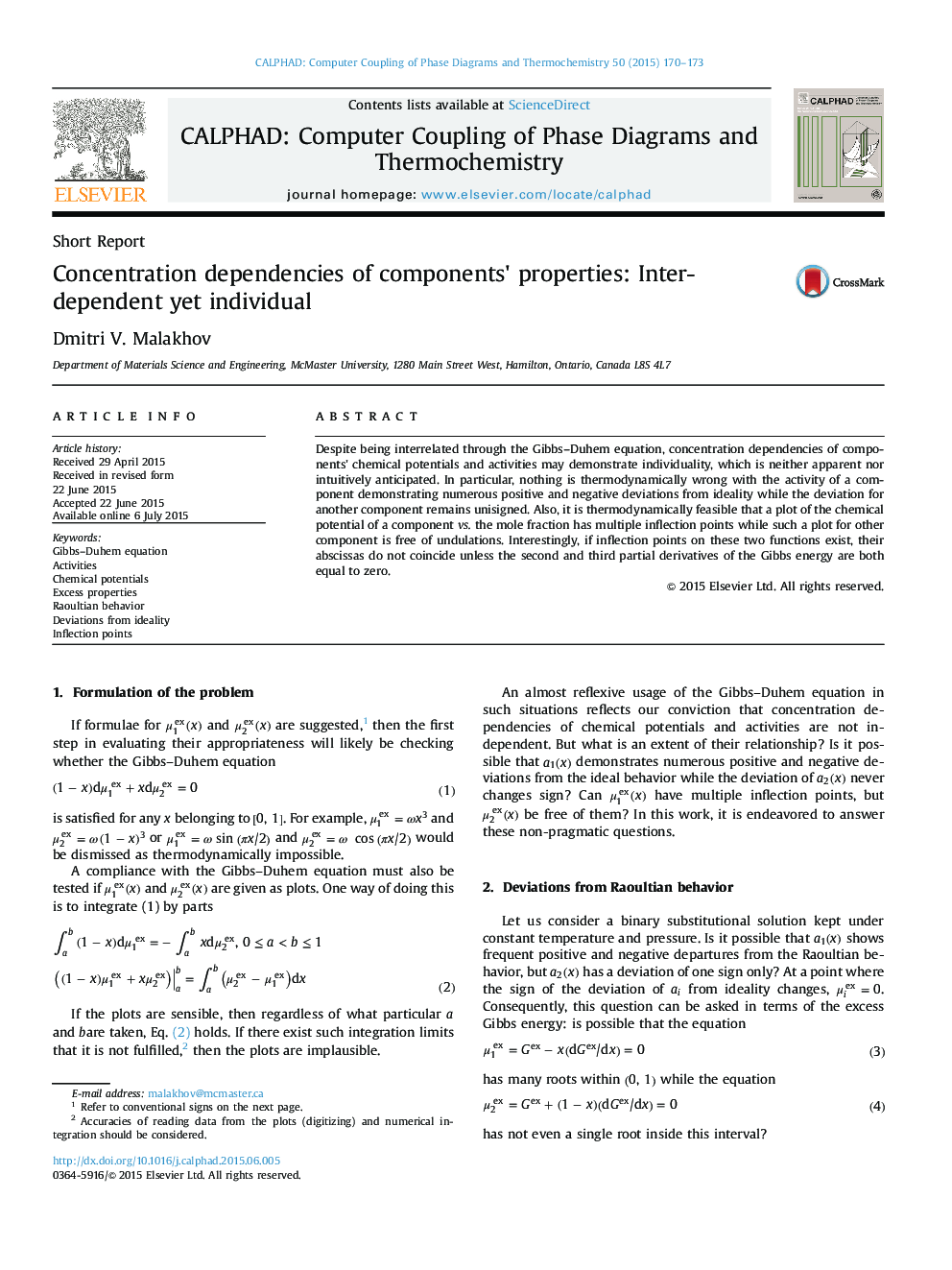| Article ID | Journal | Published Year | Pages | File Type |
|---|---|---|---|---|
| 1558829 | Calphad | 2015 | 4 Pages |
Despite being interrelated through the Gibbs–Duhem equation, concentration dependencies of components' chemical potentials and activities may demonstrate individuality, which is neither apparent nor intuitively anticipated. In particular, nothing is thermodynamically wrong with the activity of a component demonstrating numerous positive and negative deviations from ideality while the deviation for another component remains unisigned. Also, it is thermodynamically feasible that a plot of the chemical potential of a component vs. the mole fraction has multiple inflection points while such a plot for other component is free of undulations. Interestingly, if inflection points on these two functions exist, their abscissas do not coincide unless the second and third partial derivatives of the Gibbs energy are both equal to zero.
